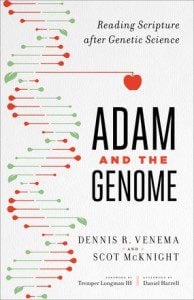 We’ve seen a few bald eagles down here in Florida and this picture is from a hometown family friend-photographer Terry Herbig:
We’ve seen a few bald eagles down here in Florida and this picture is from a hometown family friend-photographer Terry Herbig:
Want to know what Dallas Willard’s formational teachings were all about? Read this.
The newest buzz term that has potential is… Hugh Halter‘s take on missional:
We all agree:
*That the best way to start a church or renovate a church is through the
proliferation and multiplication of intentional missionary communities.
*That missionary communities must be the primary organizing structure that hold
together and propels a church forward, not the weekend church service experiences.
*That leaders must model the way first and then invite others into their experience
where they can be ‘apprenticed.’
*That missional only works if it is accompanied by incarnational nuances. In other
words, programmatic methods must be replaced by personal ownership and
commitment to live in the world like Jesus.
*That Leaders must be equippers of ministry not just paid to do the ministry for a
consumer culture.
*That ‘church gathered’ should be lean, nimble, far less expensive and thus more
free to stay on mission.
*That discipleship practices must be active, not passive. In community, not
individual. Integrated with the family, not isolated or compartmentalized away from
the family.
*That the Gospel is both verbal witness and active witness and is most visible as a
community lives intentionally between ‘up, out, in’ (3dm), ‘communion,inclusive
community, mission’ (missio) ‘gospel,community,mission’ (GCM/Soma) ALL THE
SAME!
Out of all these things we all agree on, we also agree on this ONE primary issue of
whether or not ‘missional’ will take, expand, multiply, renovate, and reveal the
kingdom to the world. And that is
*THAT YOU HAVE TO STICK WITH IT!
Parking places as mini parks! Emily Badger:
Conventional wisdom says that businesses need parking spots. If would-be customers can’t pull up out front, how will they come inside?
This is a powerful idea, and it invariably animates the opposition any time cities threaten to redesign roadways, replacing parking spots with bus lanes, cycle tracks, bike racks or wider sidewalks. Remove parking, the argument goes, and business will wither.
The reality, though, is more complicated. Consider one illustration: For the last few years, Philadelphia has converted a handful of parking spots in front of neighborhood businesses into temporary “parklets” no bigger than the space that might fit one or two cars (these tiny interventions are now popular in a lot of cities). Records from adjacent businesses show sales went up about 20 percent immediately after the parks were installed, relative to right beforehand.
Jimmy Fallon, worship leader? No kidding.
Elite schools — does it matter? Jeffrey J. Selingo: (depends on what “matter” means)
For all the attention showered on these elite college and universities, however, they enroll fewer than 6 percent of U.S. college students. To put it another way, Stanford received approximately 40,000 applications last year when about 3.4 million students graduated from high school across the U.S.
The competition for getting into elite colleges seems to be getting more intense, leaving frustrated students, parents, and counselors to wonder: Does it really matter where you go to college?
It doesn’t, according to Frank Bruni. The New York Times columnist is author of a new book coming out on Tuesday, “Where You Go Is Not Who You’ll Be.”
The book is a quick read for stressed-out students and their parents. In it he has plenty of examples and lengthy stories of Americans of all ages and from all walks of life who have found success without degrees from brand-name universities. Bruni points out, for instance, that among the American-born chief executives of the top 100 companies in the Fortune 500, just about 30 went to an Ivy League school or equally selective college. (Bob Iger, the CEO of Disney, graduated from my alma mater, Ithaca College, and unlike many other top executives never got an MBA).
In a recent essay at The Week, Damon Linker responds to several writers in First Things who lament the triumph of “secular liberalism” and the demise of “civic Christianity” in American politics, evidenced acutely by the (anticipated) victory of same-sex marriage in the arena of constitutional law at the Supreme Court. Linker writes:
“I’d like to suggest that they should get over it — that, rightly understood, Christianity can be most fully itself when it relinquishes political and cultural rule, when it ceases to identify itself so closely with any particular political order…..
Linker’s critique, which echoes Augustine, is correct as far as it goes. His Augustinian critique, however, needs to be supplemented with (if you will) an Ephesian and Athanasian critique. Yielding to the “incarnational temptation” gives way not only to political disappointment but also to ecclesiological corruption, soteriological deviance, missiological confusion, and, ultimately, Christological error.
Erik Sherman … Robert Reich or Thomas Piketty? Which has the best theory on how to end the problems associated with inequality?
Unlike climate change, where some insist that there is no scientific agreement that comes as the result of literally 100 years of observation, there is growing, if grudging, agreement that income and wealth inequality is a problem. On the business front, we’ve gone from the Economist wondering if income inequality is really bad to Dominic Barton, McKinsey & Co.’s global managing director calling “rising and persistent income inequality” the biggest challenge to capitalism in the next 20 years….
The Republican solution, to the degree they have presented one, seems to be talk of growth and getting government out of the way so the economy can create better-paying jobs. Would that the approach could work, but long stretches of deregulation have seemed only to encourage record corporate profits, not job creation. The reason is that the nature of business has changed. Increased productivity, automation, outsourcing, and a shift of manufacturing jobs overseas have significantly reduced the need for well-paid employees in this country. Executives discovered that they could hold the line on wages and workers who were doing better would be too scared to demand more. The fear or inability to turn down an offer undermines any negotiation position, so people took what they could get. Rising real estate prices may have made them feel wealthier, even if they actually weren’t, but the Great Recession whisked away that illusion.
French economist Thomas Piketty wants to tax the rich to improve public education. “If we want to have more growth in the future and more equitable growth in the future, we need to put more resources in the education available to the bottom 50 percent or bottom 80 percent of America,” he told MSNBC….
That brings Robert Reich’s suggestion of stronger unions. “Labor unions must be strengthened, especially in lower-wage occupations, in order to give workers the bargaining power they need to get better pay,” he has written. Without unions, the disparity in negotiation power is too great between big corporations and workers. Many Democrats have taken up the same line of thought. Part of the warming to the idea is that unions have been traditional supporters of the Democratic Party.
Audrey L. Mayer, on the need to slow down:
From my position, I can see the entire educational pipeline in our country, from the young students who enter to the adults who leave. Every day, I scream inside. I scream when I read the notes from my son’s teacher: he isn’t reading fast enough. He can’t solve enough addition problems in under a minute. The national standardized assessments indicate that he is on a trajectory for significant gaps in scholastic achievement (and therefore life) because he is thinking too much and doing too slowly. These reports have an air of panic: there is a problem but no time to diagnose it. Interventions must come immediately, in the form of flash cards and practice tests.
At our parent-teacher conference, I asked his teacher why he is expected to do everything fast. She replied, “He needs to do these things without having to think.”
Well, I think that’s our problem, right there.
Indeed, that is what my college students have been trained to do by this educational system. They read fast, talk fast, write fast, do fast. They write their emails so quickly (often during class … I can see the time/date stamp) that they have no time for a salutation, correct grammar or complete sentences.
Very.Well.Done. by Cassandra Smith. (Demographic aside.)
Football player retires for his health:
BERKELEY, Calif. — San Francisco 49ers linebacker Chris Borland, one of the NFL’s top rookies this past season, told “Outside the Lines” on Monday that he is retiring because of concerns about the long-term effects of repetitive head trauma.
Borland, 24, said he notified the 49ers on Friday. He said he made his decision after consulting with family members, concussion researchers, friends and current and former teammates, as well as studying what is known about the relationship between football and neurodegenerative disease.
“I just honestly want to do what’s best for my health,” Borland told “Outside the Lines.” “From what I’ve researched and what I’ve experienced, I don’t think it’s worth the risk.”
A solution to the MD shortage in the USA:
Recent headlines at RealClearPolitics tell the story: Health Law Amplifies Primary Care Doctor Shortage and Medicaid Growth May Aggravate Doctor Shortage. And a recent companion piece at RealClearPolicy reminds us the problem is not limited to primary care doctors: The Physician Specialty Shortage.
How big is the problem? The most widely cited figures come from the Association of American Medical Colleges’ Center for Workforce Studies which updated its estimates in 2010 to account for the impacts of the Affordable Care Act. That report projected an overall shortage of 62,900 physicians in 2015, showing that it would more than double to 130,600 by 2025. Even though much of the press attention has been on primary care physicians[1], the current shortage of specialty physicians actually is slightly larger in 2015 (33,100) than for primary care physicians (29,800). Given the enormous amount of time (7-10 years [2]) and money (which exceeds $1 million for some specialties [3]) to train just one physician, filling these gaps hypothetically would require a huge amount of time and money.
A recent report I’ve completed on the state of North Carolina shows that a much faster, better and cheaper path is available to address this problem: removing unnecessary restrictions on the scope of practice for advanced practice nurses (APRNs). APRNs include nurse practitioners, nurse midwives (CNMs), nurse anesthetists (CRNAs) and clinical nurse specialists (CNSs). North Carolina is among the 31 states that have yet to legislatively authorize “full [scope of] practice” status for all nurse practitioners (and there are similar regulatory barriers that stand in the way of CNMs, CRNAs, and CNSs from being able to practice to the full extent of their training.











